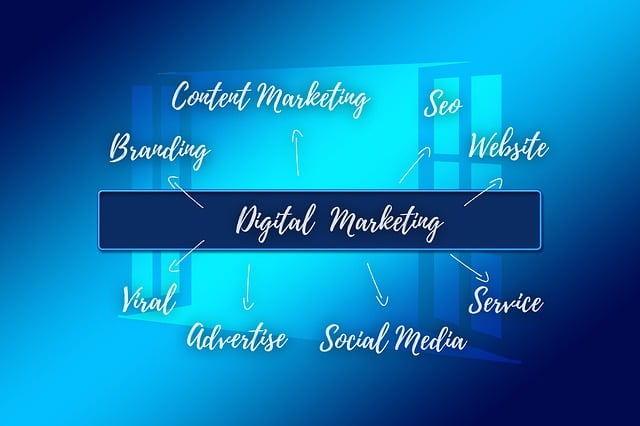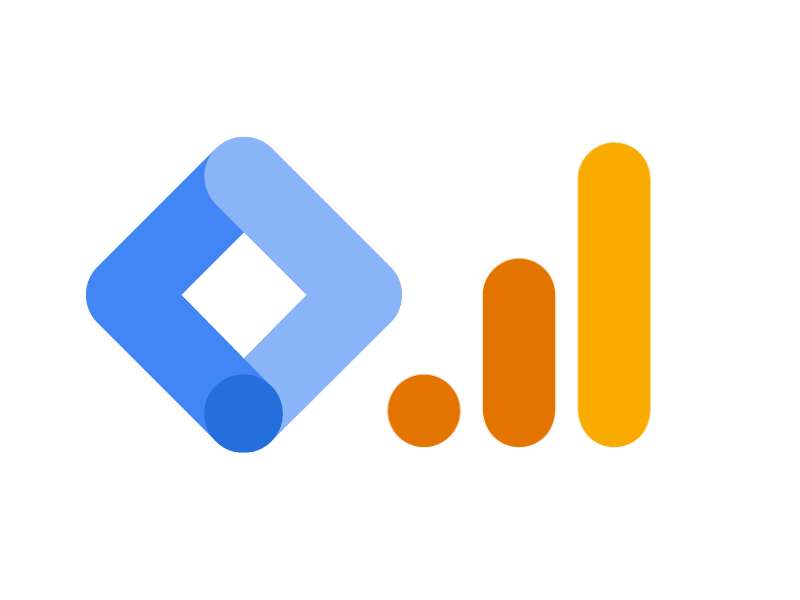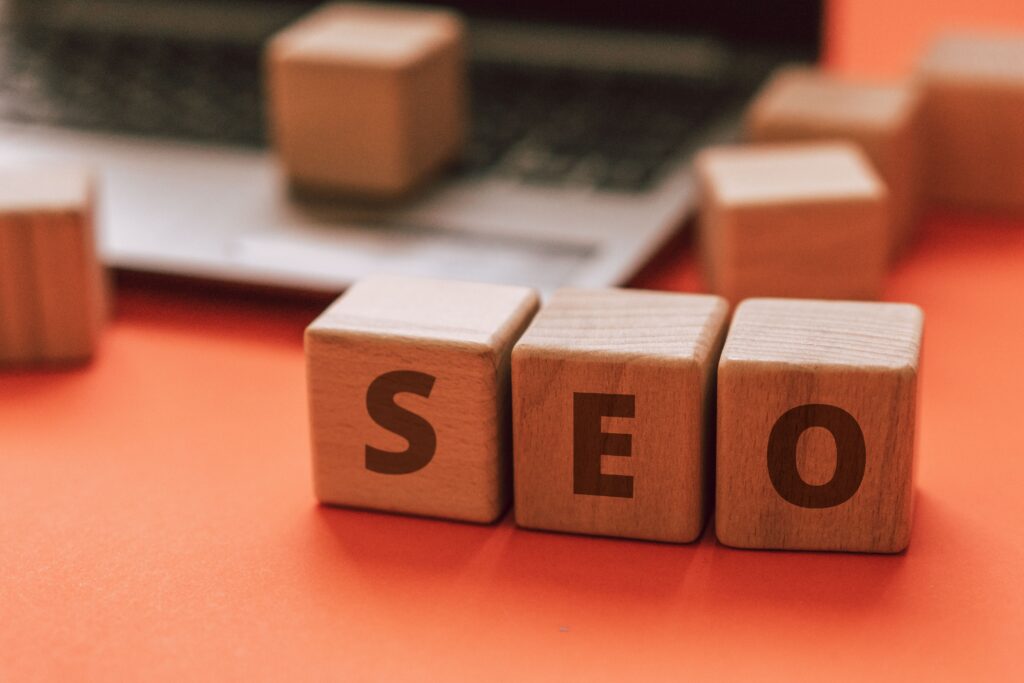how online marketing is different from offline marketing to reach audiences, while offline marketing uses traditional channels like print and broadcast. The difference lies in the medium and the way consumers engage with the content.
Understanding the distinct nature of online and offline marketing is crucial for businesses aiming to develop comprehensive strategies for audience engagement. Online marketing thrives on interactivity, real-time data analysis, and a vast array of channels such as social media, search engines, and email campaigns.
It allows for a more targeted approach, directly connecting with consumers’ digital lives and offering personalized experiences. Offline marketing, in contrast, involves tangible advertisements such as billboards, flyers, and TV commercials, which have a broad reach but limited interaction and feedback capabilities. Both forms of marketing have their strengths, and many successful campaigns integrate the two, capturing the attention of consumers across multiple touchpoints. The key lies in crafting messages that resonate with the target audience while maximizing the inherent advantages of each platform.
The Evolution Of Marketing
The marketing world has undergone a remarkable transformation. This journey from traditional methods to advanced online strategies represents a sea change in how businesses reach their audiences. Each era of innovation has paved the way for more personalized and cost-effective tactics.
From Billboards To Banners
Just a few decades ago, huge billboards were the stars of advertising, standing tall alongside highways and atop buildings. They spoke to anyone who passed by, hoping to imprint on memory and influence buying decisions. Digital banners, on the other hand, offer a stark contrast. These smart slivers of online real estate tailor messages to individual preferences and behaviors, capitalizing on the power of data.
Online banners track user interaction and adapt accordingly, offering relevancy that billboards could never achieve. In an age when screen time dominates, these digital banners have claimed a significant place in marketing arsenals.
The Shift To Digital Platforms
Offline marketing’s charm is far from gone, yet digital platforms have stolen the limelight. The internet has become humanity’s new gathering place, prompting a massive shift in how companies approach their potential customers. Social media, websites, and online advertisements now form the core of modern marketing strategies. These platforms offer distinct advantages:
- Targeted Reach: Businesses can pinpoint their audience with remarkable precision.
- Engagement: Interactive elements encourage consumers to click, watch, and share.
- Analytics: Real-time data offers insights on campaign performance and audience behavior.
- Cost-Effectiveness: Often, digital strategies incur lower costs compared to offline initiatives.
- Scalability: Campaigns can easily scale up or down based on performance and budget.
These factors clearly illustrate why digital platforms have become the favored frontier for marketers. They marry efficiency with effect, crafting campaigns that resonate with consumers on a personal level.

Credit: fastercapital.com
Key Characteristics Of Online Marketing
The digital age has given rise to unique characteristics in online marketing. Unlike its offline counterpart, online marketing thrives on direct interaction and precise targeting. These specific traits make it a dynamic and powerful tool for businesses today. Let’s explore the key characteristics that set online marketing apart from traditional formats.
Interactivity And Engagement
One of online marketing’s strongest suits is its ability to foster interactive relationships between brands and consumers. Unlike offline marketing, where interactions are mostly one-way, online platforms enable a two-way dialogue. This dynamic yields deeper customer engagement, personalized experiences, and stronger brand loyalty. Interaction comes in many forms:
- Social media comments and shares
- Email responses
- Real-time chat services
Such engagement nurtures a community around a brand, giving consumers a voice and a sense of belonging.
Data-driven Strategies
Another key feature of online marketing is its reliance on data-driven insights. With advanced tracking tools and analytical data, marketers can understand customer behavior with remarkable precision. Decisions are then based on solid data, which influences:
| Strategy Area | Impact of Data |
|---|---|
| Target Audience | Refine & segment audiences based on behavior and interests |
| Ad Performance | Optimize campaigns with real-time feedback |
| Content Relevancy | Create personalized content to increase engagement rates |
These data-led strategies allow for continuous optimization, making online marketing campaigns more effective over time.
Traditional Marketing In A Digital Age
In a world where digital screens dominate, traditional marketing still stands tall. It offers something tangible, a sensory aspect that online can’t. From flyers to billboards, these classic methods connect with us on a different level. Yet, in this digital age, synergy between the old and the new forms a formidable marketing strategy.
The Continued Value Of Print
Print media has a lasting impact. It’s the feeling of paper between your fingers. It’s the bold, vibrant visuals that catch your eye. In an online world, print stands out. It’s unique. Marketers can’t ignore its power. Here’s why:
- Print is tangible.
- It often stays in houses or offices for a long time.
- People trust print ads more than digital ones.
Integrating Classic And Current Methods
Integration is key. Using print and digital together boosts brand presence. It’s not about choosing one over the other. It’s how well they work in unison. Consider these methods:
| Traditional Marketing | Online Marketing |
|---|---|
| Newspaper ads | SEO articles |
| TV commercials | Social media videos |
| Roadside billboards | Google AdWords campaigns |
Brands reach audiences wherever they are, both online and offline. This synergy is what marks today’s most successful marketing strategies.
Targeting And Personalization
Targeting and personalization stand as pillars of online marketing strategy. These factors set apart digital campaigns from traditional offline marketing efforts. By leveraging data, online marketers deliver tailored messages to specific audiences. This leads to improved customer experiences and higher engagement rates.
Micro-targeting Audiences
The digital landscape offers unparalleled opportunities for micro-targeting. Marketers can focus on precise audience segments based on specific characteristics. This includes age, location, interests, and online behavior. Platforms like social media and search engines use algorithms to display ads to users who are most likely to show interest.
- Demographic Segmentation: Dividing audiences by age, gender, or income.
- Behavioral Analysis: Understanding user actions to drive relevant content.
- Geotargeting: Reaching customers based on their physical location.
Customizing The User Experience
In online marketing, the user experience is king. Brands create customized journeys for their customers by using interactive and engaging media. Personalized emails, product recommendations, and content adapt based on user preferences. This makes every interaction unique to the individual.
| Method | Description |
|---|---|
| Website Personalization | Web content changes to fit user profiles. |
| Email Targeting | Emails tailored to subscriber activities. |
| Interactive Content | Digital quizzes and surveys to engage users. |
Efficient use of data analytics tools allows for these personalized experiences. The result is a seamless connection between a brand and its customers, nurturing loyalty and fostering trust.
Budget And Roi Considerations
Understanding how online marketing differs from offline marketing is critical for budget and return on investment (ROI) considerations. Businesses often ask where their marketing dollars can work hardest. In the digital world, that answer centers around cost-effectiveness and measurable success.
Cost-effectiveness Of Digital
Digital marketing presents an attractive budget-friendly option. Compared to traditional methods, digital channels often offer lower costs and comprehensive audience reach. The key advantages include:
- No physical materials: Save on print and postal costs.
- Targeted campaigns: Spend smart by reaching the right audience.
- Ad flexibility: Adjust your campaigns in real-time for optimal performance.
| Marketing Type | Average Cost | Potential Reach |
|---|---|---|
| Offline (Print, TV) | Higher | Varies |
| Online (Social, Email) | Lower | Global |
Measuring Success Online
Online marketing brings precision to measuring campaign success. Real-time analytics and in-depth data provide a clear picture of ROI. Digital marketers can track:
Key performance indicators (KPIs):
- Click-through rates (CTR)
- Conversion rates
- Customer acquisition costs (CAC)
Digital tools enable ongoing campaign optimization based on performance metrics. This ensures each marketing dollar goes further, maximizing ROI.
Credit: www.insiderintelligence.com
The Role Of Social Media
The Role of Social Media has redefined how businesses interact with customers.
Traditional advertising methods lack this instant connection. On platforms like Facebook, Twitter, and Instagram, companies can build relationships directly with their audience.
Building Brand Communities
Social media fosters unique communities centered around brands.
These platforms allow users to share experiences and feedback in real time.
- Instant feedback gauges customer satisfaction
- User-generated content boosts brand visibility organically
- Communities provide valuable insights and data for businesses
Influencer Marketing
Influencer marketing has changed the game for online brand promotion.
| Influencer Type | Reach | Niche |
|---|---|---|
| Nano | 1K-10K | Highly Specific |
| Micro | 10K-100K | Specific |
| Macro | 100K-1M | Broader |
| Celebrity | 1M+ | Very Broad |
Influencers hold the power to shape opinions and drive sales.
They connect with followers on a personal level, unlike traditional advertising.
Content Is King
The digital realm thrives on content. In online marketing, content isn’t just a king; it’s the entire kingdom. Unlike offline marketing, where physical ads and face-to-face interactions reign, online marketing uses words, images, and videos to engage audiences. Stellar content captivates, informs, and motivates. It turns casual browsers into loyal customers.
Content Marketing Strategies
Effective online marketing always starts with a strategy. Let’s explore the arsenal of content marketing strategies that helps brands stand out:
- SEO optimization ensures content ranks high on search engines.
- Engaging blog posts attract and retain audience attention.
- Interactive media keeps users engaged longer on the page.
- Social media strategies build communities and boost shares.
- Email campaigns personalize user experience.
The Power Of Storytelling
Nothing connects with people more than a good story. Here’s how storytelling changes the online marketing game:
- It creates a memorable brand experience.
- Stories evoke emotions leading to better brand recall.
- They encourage sharing, expanding content reach organically.
Remember, in the endless sea of digital content, it’s not just what you say but how you say it that captures the heart.

Credit: m.facebook.com
Seo: The New Age Of Discoverability
Imagine a world where your business shines brightest. That’s the power of Search Engine Optimization (SEO). In the digital realm, SEO reigns supreme in connecting brands with their audience. Unlike offline marketing’s traditional tactics, online marketing through SEO offers precise targeting and unparalleled insight into customer behavior.
Algorithm Mastery
Understanding search engine algorithms is a game changer. These complex formulas decide which websites climb higher in search results. Brands that master this can stay ahead in online marketing.
- Keep content relevant and valuable.
- Use keywords smartly.
- Ensure websites load quickly.
- Make your site mobile-friendly.
Organic Vs. Paid Searches
In a battle for visibility, organic and paid searches are key players. Organic searches rely on SEO to attract clicks naturally. Paid searches, on the other hand, involve paying for a top spot.
| Organic Search | Paid Search |
|---|---|
| Cost-effective in the long run | Immediate, but costs per click |
| Builds credibility and trust | Boosts traffic quickly |
| Takes time to show results | Results stop after payment stops |
Analytics And Adaptation
Understanding the dynamics of online marketing requires a deep dive into ‘Analytics and Adaptation.’ Unlike offline marketing, the digital realm provides precise tools to measure success and tweak strategies on the fly. This section explores how analytics drive smarter marketing decisions and the importance of adapting to user behavior.
The Importance Of Metrics
Analyzing performance metrics is the cornerstone of online marketing. It reveals what works and what does not. Marketers track various metrics such as clicks, impressions, engagement rates, and conversion rates. These figures paint a clear picture of campaign success. Real-time data allows for quick adjustments, maximizing ROI.
- Click-through rates (CTR): Evaluate ad effectiveness.
- Bounce rates: Measure website user interest.
- Conversion rates: Track completed user actions.
Learning From User Behavior
The digital environment is ripe with opportunity to study user interactions. This is through website analytics, social media insights, and behavioral tracking tools. Marketers learn from these interactions and adapt strategies to align with user preferences.
| User Behavior | Benefit to Marketers |
|---|---|
| Page Views | Indicate content popularity. |
| Time Spent on Site | Show engagement levels. |
| Navigation Path | Reveal user flow and potential roadblocks. |
Adapting to user feedback is swift in online marketing. Tools enable instant strategy shifts. This contrasts sharply with the slow feedback loops of traditional marketing methods. By embracing analytics and adaptation, marketers tailor experiences and improve outcomes.
The Future Landscape Of Marketing
The Future Landscape of Marketing is evolving at a rapid pace. Online and offline marketing avenues are converging with new technologies. Marketers prepare for a world where strategies interweave through physical and digital realms.
Emergent Technologies
Digital advancements constantly reshape marketing. Virtual reality (VR) and augmented reality (AR) offer immersive brand experiences. Artificial Intelligence (AI) personalizes customer interactions. Let’s explore these emergent technologies:
- Artificial Intelligence: AI tailors marketing messages for individual users. It predicts what customers want before they search.
- Chatbots: Real-time customer service, available 24/7, without human presence.
- VR and AR: These tools help customers try products virtually. They bridge the gap between digital and physical experiences.
Predicting Consumer Trends
Predicting trends involves the analysis of gigantic data pools. Marketers use data analytics to foresee market changes. They anticipate consumer desires with impressive accuracy.
| Data Source | Role in Predicting Trends |
|---|---|
| Social Media | Monitors conversations to gauge interests and opinions. |
| Search Queries | Tracks what consumers search for online. |
| Purchase History | Analyzes past buys to predict future needs. |
Marketers adapt to a dynamic landscape by leveraging emergent technologies and predicting trends. Success hinges on understanding and utilizing the ever-changing digital tools. This knowledge allows businesses to remain at the forefront of innovation and customer engagement.
Frequently Asked Questions For How Online Marketing Is Different From Offline Marketing?
What Is The Difference Between Offline Advertising And Online Advertising?
Offline advertising involves traditional media like print, television, and billboards. Online advertising uses digital platforms such as social media, search engines, and websites. The key difference lies in the medium through which the audience receives the marketing message.
What Is The Difference Between Online Marketing And Internet Marketing?
Online marketing encompasses all digital channels to promote products or services. Internet marketing is a subset, focused specifically on strategies within the internet realm, like SEO and social media.
What Is The Difference Between Offline Marketing And Traditional Marketing?
Offline marketing involves promotional strategies that don’t use the Internet, such as print ads, billboards, or direct mail. Traditional marketing encompasses both offline techniques and old-school online methods like email blasts. Both differ in digital engagement and the platforms they utilize.
What Is The Difference Between Online And Offline Commerce?
Online commerce involves buying and selling goods via the Internet. Offline commerce occurs in physical stores without digital intervention.
What Is Online Marketing?
Online marketing, also known as digital marketing, leverages internet-based channels to promote products or services.
Conclusion
As we’ve explored, online and offline marketing hold distinct advantages for businesses. Embracing both strategies can yield comprehensive results, leveraging the global reach of the internet with the personal touch of traditional methods. For a robust marketing mix, companies should assess their goals, audience, and resources.
Smart integration of online and offline initiatives can propel growth and brand recognition in an ever-evolving marketplace.




